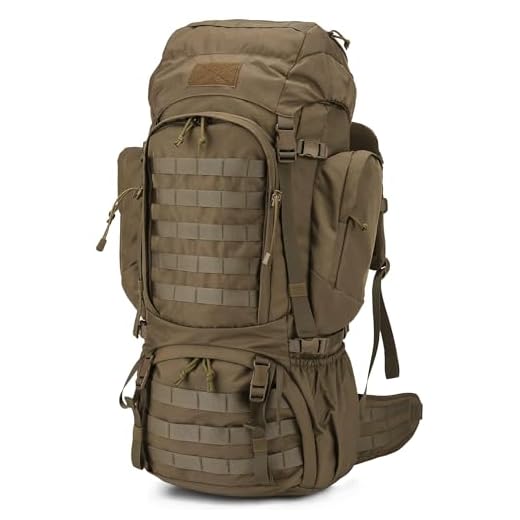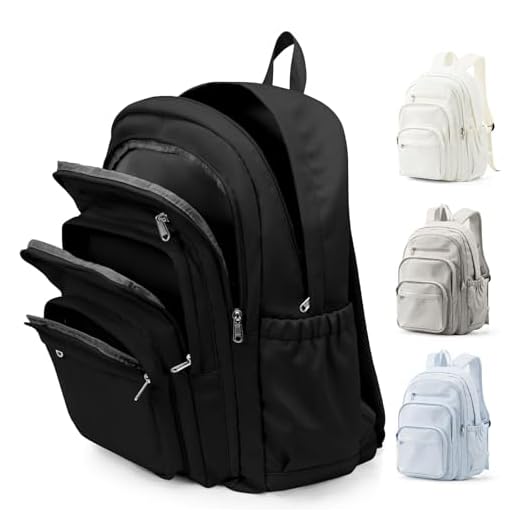



Ole Ferdinand Bergan (1876–1956) registered a patent for a framed rucksack in 1908 and founded Bergans company in Norway. Bergan design introduced a curved metal frame that shifted load toward hips, adjustable harnessing, external pockets and attachment loops. Military units across Europe adopted Bergan-style packs during early 1900s, while civilian outdoor use grew markedly after World War II.
Pre-modern precursors existed for millennia: hunter-gatherer groups used hide and woven sacks; medieval porters carried knapsacks and pack saddles; indigenous communities employed cradleboards and simple frames to move loads. Haversack and knapsack terms appear in military records from 18th and 19th centuries, while metal-framed systems emerged with aluminum and steel-tube technology near turn of 20th century.
Practical buying guidelines – Choose frame type by activity: frameless or daypack for 10–30 L, internal-frame for 30–65 L, external-frame for heavy loads and winter expeditions. Aim for hip belt to bear 60–70% of total load; measure torso length for correct harness fit. Prefer 500D Cordura or ripstop nylon for abrasion resistance; select quality zippers and reinforced stitching. Check for hydration-sleeve compatibility (reservoir up to 3 L) and accessible pockets for frequently used items. Test a loaded pack on a 1–2 hour walk to reveal pressure points and refine strap settings.
Care and longevity – Clean with mild soap and lukewarm water, air dry away from direct sunlight; repair small tears with nylon tape and replace worn webbing promptly. When packing, place heaviest items close to back and above hip belt, use compression straps to stabilize load and minimize swing, and distribute frequently accessed gear in top or hip-belt pockets for quick retrieval.
Ancient carrying methods that shaped modern pack design
Recommendation: select a pack with a padded hip-belt transferring 60–70% of load, adjustable torso fit (typical ranges: S 38–43 cm; M 43–48 cm; L 48–53 cm), and load-lifter straps to balance shoulder-to-hip weight distribution.
Tumpline influence: Andean and Mesoamerican tumpline systems (used by Inca, Maya, Aztec) shifted heavy loads onto skull and cervical spine via a frontal strap. Biomechanical studies show tumpline-style load transfer reduces shoulder strain and permits carriage of greater mass; modern hip-belts plus load-lifters reproduce that weight-shift while avoiding neck compression.
Two-strap slings and hooped frames: Ancient Egyptian and Roman single- and dual-strap sacks evolved into more stable two-strap arrangements used by medieval porters. Roman “sarcina” bundles, carried with poles and straps, introduced idea of rigid support. 19th-century mountain guides used wooden external frames for bulky loads; that external-frame concept informed early 20th-century rucksacks and prompted mid-20th-century internal-frame designs that place mass closer to spine for improved balance.
Pack-saddle and pack-animal practices: Methods used to secure loads on horses and mules emphasized symmetrical distribution and compression straps to prevent shifting. Those principles generated modern compression systems, cross-body stabilizers and pannier attachments that maintain center-of-gravity alignment on human carriers.
Practical takeaways: for heavy, bulky loads prefer external-frame models (ventilation, stable carry up to 30–40 kg); for dynamic, technical use choose internal-frame designs with torso-specific sizing and a robust hip-belt; always fit packs with a loaded weight of 12–20 kg during purchase and tune load-lifters so shoulder straps relieve minimal vertical load while hips bear majority of mass.
For unrelated equipment comparisons see best air pump for large aquarium.
Patents establishing framed and suspension rucksacks (19th–20th centuries)
Prioritize study of Ole F. Bergan’s 1908–1909 Norwegian patent for an external-frame rucksack: curved tubular frame, rigid load-bearing structure, integrated hip-belt for load transfer, and detachable bag unit.
Examine US military patent activity from 1880s through 1930s that codified framed field packs: multiple filings feature wooden slat or metal-sheet frames, suspended cargo beds, reinforced shoulder straps, and adjustable suspension points used by quartermaster departments and contractors supplying infantry equipment.
Survey mid-20th-century mountain-equipment patents that moved suspension elements toward comfort and stability: lightweight aluminum stays, internal-frame panels, articulated hip-belts and load-lifter straps appear in filings by climbing outfitters and small manufacturers during 1950s–1970s; these filings laid groundwork for modern harness geometry.
Recommended archival search strategy: query Espacenet and USPTO full-text databases for keywords “external frame”, “frame pack”, “suspension harness”, “slat frame” plus IPC class A45F (carrying devices) and subgroups; consult Norwegian Patent Office records for Bergan filings and British National Archives or UKIPO for military contractor patents; cross-check patent drawings against quartermaster procurement documents and period catalogs.
For preservation, authentication, or design reuse inspect original drawings and claim language for frame curvature, attachment method (riveted bracket, welded sleeve, adjustable clip), hip-belt geometry, material specification (steel tubing, wood, early aluminum alloys), and any stamped patent numbers on hardware; company catalogs and early trade literature often reproduce patent figures useful for precise dating.
How military pack requirements in World War I and II shaped rucksack features
Recommendation: Prioritize framed support, wide padded hip belt, adjustable sternum strap, external attachment points for entrenching tool and mess kit, water-resistant canvas or modern synthetic, and modular pouch interfaces derived from combat lessons of 1914–1945.
World War I: trench loads and standardized webbing
Trench warfare forced soldiers to carry prolonged heavy loads; typical combat loads rose to about 20–30 kg during major offensives. That pressure produced two direct design responses: rigid or semi-rigid support to shift weight onto hips, and standardized belt-and-pouch systems for rapid access to ammunition, gas mask, rations, and entrenching tool. British 1908 Pattern Webbing introduced a belt-centered approach that reduced shoulder strain by redistributing weight into hip area and by creating fixed attachment points for small gear. Materials remained heavy-duty canvas and leather with brass or steel hardware; roll closures and external straps allowed quick attachment of bundled items while keeping low profile for prone firing.
World War II: modularity, mass production, specialization
Mass mobilization and mechanized logistics shifted priorities toward modularity, durability, and camouflage. Armies standardized pack sizes and adopted reinforced stitching, stamped metal fittings resistant to battlefield wear, and treated cotton duck for improved water resistance. Field units required quick-access map pouches and designated carriage for canteens, bayonets, and entrenching tools, which led to distinct external pockets and compression straps that later influenced modular systems. Airborne and motorized units added quick-release harnesses and low-profile designs for safe parachute deployment and compact vehicle stowage. Combat testing also accelerated ergonomic features such as padded shoulder straps and wide hip belts to reduce fatigue over long marches and repeated dismounts.
Design takeaways: transfer main load to hips via rigid or internal frame, include adjustable load lifters and sternum strap, provide multiple external attachment points sized for entrenching tool and mess kit, use treated cotton or modern synthetic for water resistance, standardize pouch interface to support modular add-ons, minimize pack depth for prone firing and vehicle stowage, and employ corrosion-resistant hardware with reinforced stitching for longevity under mass-production conditions.
Key innovators and firms whose designs persist today
Recommendation: choose a carry system that references Bergans’ early framed load transfer for heavy hauls or Fjällräven’s lightweight, school‑friendly form for everyday use; for multi‑day trekking prefer packs with adjustable torso length, contoured hipbelt and ventilated back panels derived from Deuter, Osprey and Gregory developments.
Ole F. Bergan (Norway, 1876–1956) – patented an external metal frame in 1909 and founded Bergans of Norway in 1908. Core legacy: rigid frame that shifts load toward hips, integrated shoulder harness and quick‑release adjustments. Modern external‑frame designs still use Bergans’ geometry for hunting, ski touring and hauling bulky loads.
Åke Nordin (Sweden, 1936–2013) – launched Fjällräven in 1960 after early experiments with lightweight Swedish rucksacks; team produced Kånken in 1978 as a simple, ergonomic school pack. Core legacy: lightweight pack bodies, flat bottom panels and simplified straps for everyday ergonomics; Kånken lineage remains dominant in urban carry categories.
Deuter (Germany, founded 1898) – introduced anatomical shoulder straps, ergonomically curved frames and late‑20th‑century suspended mesh back panels (Aircomfort) that improved ventilation and load stability. Core legacy: suspension systems that combine firm load transfer with persistent airflow for long hikes in warm conditions.
Lowe Alpine (founded by Lowe brothers, 1967) and Kelty (USA, mid‑20th century) – Lowe Alpine helped pioneer internal‑frame packs for mountaineering; Kelty popularized lightweight aluminium external frames and simple, durable harnesses for backpacking. Core legacy: internal‑frame architecture for close‑to‑body stability plus lightweight external frames for rigid load carriage.
Gregory and Osprey (late 20th century innovators) – introduced contoured hipbelts, modular torso adjustable systems and integrated mesh/foam hybrid backs. Osprey’s AntiGravity and Gregory’s contoured frames set standards for fit‑first design used by most contemporary alpine and long‑haul packs.
Practical selection rules: for heavy, irregular loads prioritize external‑frame lineage (Bergans/Kelty); for multi‑day mountain travel prefer internal‑frame packs with adjustable torso and a molded hipbelt (Lowe/Gregory/Osprey); for daily urban use pick lightweight, simple designs inspired by Fjällräven Kånken. For rainy climates pair chosen pack with compact rain protection such as best folding umbrella brand or use a translucent diffuser like best white shoot through umbrella for gear photography and quick shelter.
Verify a pack’s origin using museum collections and patent databases
Compare object-specific features and provenance records in major museum collections, then match patent claims and drawings for chronological confirmation.
1. Document artifact: capture high-resolution images (front, back, sides, interior, stitching, labels, fastenings), record exact measurements, list materials, note repairs or alterations, transcribe any maker marks or ink stamps.
2. Search museum catalogs: query online collections at Smithsonian National Museum of American History, Imperial War Museums (IWM), Victoria and Albert Museum (V&A), Deutsches Museum, Royal Ontario Museum, Norwegian Museum of Science and Technology, Tekniska museet. Use keywords plus material or feature filters (canvas, aluminium frame, external frame, internal frame, hip belt, suspension harness).
3. Request provenance files: email collection curator or registrar with object images and accession request; ask for acquisition date, donor/seller name, prior ownership chain, catalogue entries, and conservation reports. Record accession numbers and any exhibition loans.
4. Search patent databases: use Espacenet (EPO), USPTO PatFT, Google Patents, WIPO PATENTSCOPE. Restrict by classification CPC/IPC A45F (carrying articles) and A45F 3/00 (packs/rucksacks), set date windows aligned with suspected manufacture period, and filter by assignee when company name is known.
5. Match features to claims: extract claim language and figure references from patent documents; compare unique details (frame geometry, harness attachment points, load-transfer elements, materials specified) against photographed construction and measurements. Prefer patents with drawings that show identical component layouts.
6. Cross-check trade literature: locate historical retail catalogs, outdoor gear magazines, and military procurement lists for model names, serial ranges, or production years. Use library archives, HathiTrust, Internet Archive, and Europeana for scanned catalogues and ads.
7. Use company archives and registries: contact manufacturer archives, corporate registrars, or national business registries for production ledgers, serial-number logs, or original specification sheets when available. Request copies of original sales invoices or warranty records if held.
8. Validate materials and manufacturing techniques: request conservation lab analysis for fibers, metal alloys, stitching patterns, and dyes when documentary evidence conflicts with catalog or patent dates; include lab certificates in provenance dossier.
9. Synthesize evidence: assemble timeline that links earliest patent priority/publication dates, first documented museum occurrence or catalog listing, and material analysis results. Present findings with citations: patent numbers, patent priority/publication dates, museum accession numbers, catalogue citations, and lab report identifiers.
| Resource | Type | Search focus | Expected output |
|---|---|---|---|
| Espacenet (EPO) | Patent database | CPC/IPC A45F, date range, assignee | Patent numbers, drawings, claims, priority dates |
| USPTO PatFT | Patent database | US patents, key-word phrases (external frame, suspension harness) | Full-text patents, assignment records |
| Google Patents | Patent aggregator | Cross-jurisdiction search, image comparison | PDF patent copies, citation chains |
| Smithsonian / IWM / V&A online catalogs | Museum collections | Maker marks, accession records, exhibition history | Object records, accession numbers, curator notes |
| Europeana / Internet Archive / HathiTrust | Historical literature | Catalogues, advertisements, field manuals | Scanned pages with model names and years |
| Company archives / registrars | Corporate records | Serial lists, production dates, original specs | Production ledgers, invoice copies, correspondence |
| Conservation laboratory | Analytical service | Material composition, fiber dating | Lab reports, microscopy images, element analysis |
Prioritize primary documentary evidence: cite patent numbers and accession numbers when asserting origin, attach copies of original documents to provenance file, and retain curator and analyst contact details for future verification.
Identify vintage pack types by construction, materials, and maker’s marks
Inspect frame first: external metal frames usually date to 1950s–1970s recreational gear; wooden A-frames or heavy canvas webbing point to pre-1940s military or hunting rigs; internal aluminum stays or molded plastic foam indicate post-1970s technical designs.
Construction clues
- Frame style: tubular steel or riveted aluminum with stamped part numbers → mid-20th century; welded or brazed joints with factory paint → 1940s–1960s; molded plastic or composite frames → 1970s onward.
- Suspension: flat canvas yoke with sewn-on straps and leather reinforcements → pre-1950; padded contoured harness with adjustable load lifters → post-1960s.
- Seams and stitching: single-row chainstitch or hand-stitched bartacks → 19teens–1930s; double-needle lockstitch with uniform 8–12 stitches per inch → industrial production after 1930s.
- Reinforcements: sewn-in wooden stays or horsehair pads found in early packs; early felt or wool backpads appear before closed-cell foams.
- Pocket construction: external map pockets with leather flaps and hand-cut rivets → field gear 1900–1940; zippered compartments and molded pocket trays → leisure and alpine designs after 1960.
Materials, hardware and maker’s marks
- Fabric types: heavy cotton duck or waxed canvas (8–18 oz) common before widespread synthetic use; gabardine and lightweight cotton on vintage travel models; Cordura nylon and ripstop fabrics start appearing in 1960s–1970s.
- Fasteners and zippers: metal teeth with stamped slider codes (branded Talon, YKK numbers) indicate mid-century onward; molded plastic teeth and injection-molded sliders mark later production. Look for manufacturer initials on sliders or stamped numbers on metal pulls.
- Buckles and closures: leather straps with brass roller buckles typical pre-1950; early plastic or phenolic (Bakelite-like) buckles appear 1930s–1950s; anodized aluminum quick-adjust buckles common 1960s–1980s.
- Rivets and grommets: solid brass or copper rivets used on older gear; pop-rivets and stamped steel grommets signal mass-produced mid-century pieces.
- Labels and stamps: woven manufacturer labels sewn into interior seams appear from 1920s onward; paper hangtags with model names common in 1950s–1970s. Military contract stamps (country-specific marks, contract/model codes) often inked or stenciled on canvas or leather panels–record formats can indicate nation and era.
- Leather parts: vegetable-tanned leather with hand-tooling and stitch holes visible on edges suggests 19th–early 20th century; chrome-tanned, machine-cut leather indicates later manufacture.
- Quick dating checklist:
- If heavy waxed canvas + wooden stays → likely pre-1945.
- External tubular metal frame + cotton web straps → likely 1950s–1970s recreational or hunting model.
- Presence of Cordura or ripstop nylon → likely 1960s onward.
- Molded foam back panels or injection-molded buckles → likely post-1970.
- Practical tests:
- Measure stitch density over damaged area: hand-era pieces show variable spacing; machine-era pieces show uniform counts.
- Smell and feel fabric: waxed canvas has distinct lanolin/oil residue; modern synthetics smell faintly of polymer.
- Magnet test on frame: magnetic response reveals steel vs aluminum; aluminum frames usually non-magnetic and often lighter by feel.
- Inspect slider/zipper markings under loupe: letters or numbers can be matched to zipper-maker era charts kept by collectors.
Photograph every stamp, label, and hardware imprint. Create a short item report: frame type, fabric weight (oz), stitch count per inch, zipper maker code, buckle material, label text, inked stamps. That report allows focused comparison with maker-specific reference guides and collector archives without broad guessing.
FAQ:
Who invented the backpack?
There is no single inventor. People have carried loads on their backs since prehistoric times using simple bags and slings. The modern external-frame rucksack is often linked to Norwegian inventor Ole F. Bergan, who patented an external frame design in 1908 that improved load distribution for hikers and soldiers. From that point many makers and users — military units, mountaineers and outdoor gear companies — refined shapes, suspension systems and materials to produce the variety of packs seen today.
When were backpacks first used by humans?
Carrying devices appear in the archaeological record going back thousands of years: straps, hide pouches and woven bags show up in ancient cultures. Civilizations such as the Egyptians, Greeks and Romans used simple pack solutions for travel and trade. Over centuries those basic carriers evolved into saddle bags, merchant packs and military rucksacks before industrial manufacturing produced the stitched and fabric packs familiar from the 19th and 20th centuries.
Did one company invent the school backpack?
No single firm can claim full credit, but certain companies popularized the style used by students. After World War II manufacturers began using lightweight fabrics and zippers, making soft daypacks common. Brands that emerged in the 1960s and 1970s helped make the fabric daypack a mass-market item for school use, turning a practical outdoor design into an everyday carry item for students.
How did backpack design change over time?
Design changes reflect shifting needs and new technologies. Early packs were leather or canvas pouches; the external-frame rucksack added a rigid frame to transfer weight to the hips. Mid-20th century developments introduced internal frames and aluminum stays for closer-to-body carry, which improved balance for climbers and hikers. The introduction of synthetic textiles such as nylon and high-tenacity fabrics reduced weight and increased durability. Other refinements include padded shoulder straps, hip belts, load lifters, sternum straps, multiple compartments, water-resistant coatings and dedicated pockets for laptops or hydration bladders. Military requirements, outdoor recreation and urban use each pushed specific innovations, producing many specialized models.
Are there patents for backpacks and where can I find them?
Yes. Individual inventors and companies have patented specific features such as frame designs, suspension systems, hip-belt mechanisms and hydration systems. One notable early patent is Ole F. Bergan’s external-frame rucksack from 1908. To locate patents, search public databases like Google Patents, the United States Patent and Trademark Office (USPTO) site or the European Patent Office (Espacenet) using keywords such as “backpack,” “rucksack,” “pack suspension” or “pack frame.”











